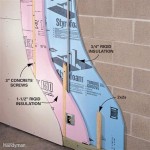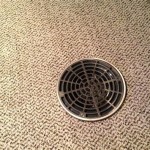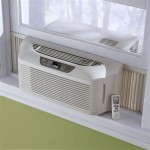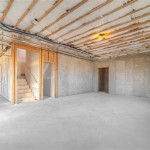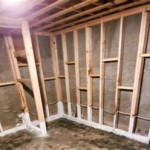Mold Resistant Drywall For Basement
Mold in basements is a serious problem that can cause a wide range of health problems, including respiratory issues, allergies, and even chronic illnesses. In addition, mold can damage your home's structure and furnishings, leading to expensive repairs. Thankfully, there are a number of ways to prevent mold growth in your basement, including using mold-resistant drywall.
Mold-resistant drywall is a type of drywall that has been treated with a mold-resistant agent. This agent helps to prevent mold spores from attaching to the drywall and growing. Mold-resistant drywall is available in a variety of thicknesses and can be used in any area of your basement, including the walls, ceilings, and floors.
If you are considering using mold-resistant drywall in your basement, there are a few things you should keep in mind. First, mold-resistant drywall is not immune to mold growth. If your basement is not properly ventilated, or if there is a lot of moisture in the air, mold can still grow on mold-resistant drywall. However, mold-resistant drywall will help to prevent mold growth, and it will make it easier to clean up any mold that does occur.
Second, mold-resistant drywall is more expensive than regular drywall. However, the cost of mold-resistant drywall is often worth it, especially if you have a history of mold problems in your basement. Mold-resistant drywall can help to protect your health and your home, and it can save you money in the long run.
If you are interested in using mold-resistant drywall in your basement, there are a few things you can do to prepare. First, make sure that your basement is properly ventilated. This means having a working exhaust fan and opening windows and doors whenever possible. Second, try to keep the humidity level in your basement below 50%. You can do this by using a dehumidifier or by ventilating your basement more often.
Once you have prepared your basement, you can begin installing mold-resistant drywall. Mold-resistant drywall is installed in the same way as regular drywall. However, it is important to use mold-resistant sealant around all seams and joints. This will help to prevent mold from growing on the seams and joints.
Mold-resistant drywall is a valuable tool in the fight against mold growth in your basement. By using mold-resistant drywall, you can help to protect your health, your home, and your wallet.
Here are some additional tips for installing mold-resistant drywall in your basement:
- Wear a dust mask and gloves when working with mold-resistant drywall.
- Use a sharp knife to cut mold-resistant drywall.
- Apply mold-resistant sealant around all seams and joints.
- Allow the mold-resistant sealant to dry completely before painting or wallpapering.
- Inspect your mold-resistant drywall regularly for signs of mold growth.
- Clean up any mold growth immediately.

How To Use Mold Resistant Drywall Where Install It

Healthy Safe Moisture Mold Free Basement Living Space This Is Drywall

What Type Of Drywall To Use In A Basement Wallboard Trim Tool

Choosing The Right Drywall For Your Basement

Drywall Buying Guide Mold Moisture Resistant Vs Fire Material Sales

Healthy Safe Moisture Mold Free Basement Living Space This Is Drywall

Don T Test Your Luck With Drywall Why Our Waterproofed Basement Walls Are The Way To Go News And Events For Total Finishing

Healthy Safe Moisture Mold Free Basement Living Space This Is Drywall

Sheetrock Brand Mold Tough Panels Firecode X

7 Places You Should Use Mold Resistant Drywall


